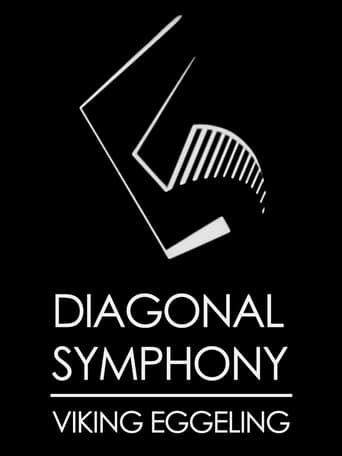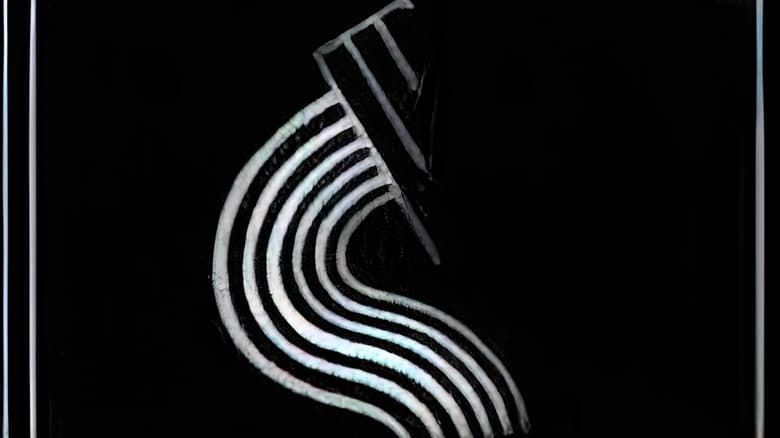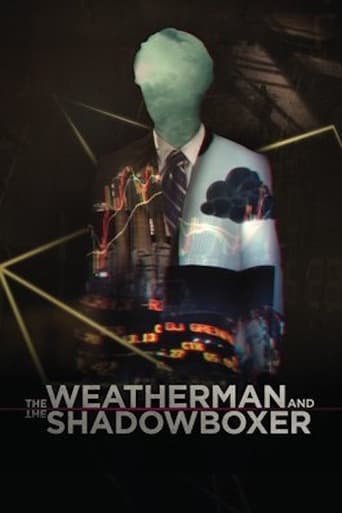

Diagonal Symphony (1924)
A tilted figure, consisting largely of right angles at the beginning, grows by accretion, with the addition of short straight lines and curves which sprout from the existing design. The figure vanishes and the process begins again with a new pattern, each cycle lasting one or two seconds. The complete figures are drawn in a vaguely Art Deco style and could be said to resemble any number of things, an ear, a harp, panpipes, a grand piano with trombones, and so on, only highly stylized. The tone is playful and hypnotic.
Watch Trailer
Cast
Similar titles
Reviews
To me, this movie is perfection.
Thanks for the memories!
It's entirely possible that sending the audience out feeling lousy was intentional
There are better movies of two hours length. I loved the actress'performance.
While this film practically defies description and is practically impossible to review, I decided to take this on simply because the opening made me laugh. There is a blurb that appears on the screen and indicates that this film by Viking Eggeling is simply a work of genius!! The summary above is taken from this self-congratulatory praise!! Never have a seen a film so quick to pat itself on the back!!The entire silent film consists of art deco-style black & white shapes appearing and moving about--all with diagonals or with diagonals superimposed on it. Set to music this might have been mesmerizing, but as a silent it lacks a lot. I won't give it a score but would beg to differ that it is the best abstract yet conceived (at least by 1924)--something better must surely exist--something worth seeing to the average Joe.
Those grotesque lines and numerous haphazard shapes really captivate you and you beseech your noggin to construe a meaning for patterns. You toil assiduously and eventually get lost in the never-ending meandering lines. Akin to Escher's painting of flight of incomprehensible and unfathomable stairs, the right angled figures and horizontal and vertical histograms in Viking's enigmatic video leave us in a profound flummox.'Symphonie Diagonale' is a quintessential example of abstraction in Modern art. Picasso, Cezanne did tangentially talk about abstraction but more or less remained stuck to the thought of depicting the main idea lucidly. But, Viking Eggeling on the other hand takes abstraction to an unprecedented and fascinating realm. The gist of this piece of work by Viking is to break free the modern paintings from the shackles of property of being static, i.e. to make the idea of depicting transition or fleeting movement in a painting (*series of photos) conceivable. The frames come one after another, thus creating a motion picture which facilitates delineation of author's chain of thoughts possible. It seems like the shapes appearing in a cyclical order symbolize the recurring nature of several things around us, the symmetrical stairs of our home, keys on a piano, day and night, seasons and so forth. To pinpoint and interpret the exact theme Viking had in his mind is a conundrum, maybe he thought more in terms of the video eliciting different response in viewer's mind and how can self-correlation of viewer gives a structure and rarefied boundaries to this work. The rhythm, with which the images appear, is not exactly in a fixed pattern or not exactly in a totally random pattern but it lends it a sense of meaning. The figures in shapes of cigarette smoke, an ear, a harp, entice the viewers to give some weight-age to them and conceptualize the whole video. As this piece of movie was silent originally thus the music's significance stands on very thin ice. Maybe, patterns and music are attempting to coherently complement each other. Music though is hypnotic and amusing; it hardly solves any purpose rather it just baffles the viewer. The repetitive patterns, strange appearance of the figures makes the video extremely loaded with information and very strenuous. You can't look at it for long duration and maybe this constraint makes it so beautiful and adds to a unique aesthetic sense to it. Though it's very hard to fully understand the underlying idea of the video, still the idea of strange forms coming again and again makes it impressive. In the end, I feel that Viking wanted us to appreciate the change and accentuate the fact that change is what keeps us interested in everyday life.
Diagonale Symphonie, what to expect? some strange movie, and indeed, it turned out to be a very strange light effects movie, where you keep wondering what you are looking at. is it a piano? is it a glass? is it a chicken? is it a wig? it's really hard to say, because the little differences with each picture of light you get to see, really change the global frame you get to see. is it the sun? is it a knife? actually, it's not quite that funny, because as a viewer, I want to know what I'm looking at. maybe the title means something... yes, it could be instruments. that would explain a lot. instruments, shown by light, maybe it means standing in the spotlights, to be famous, perhaps this movie is about being famous.
With this movie, Eggeling found a new way of artistic expression that was followed later by Hans Richter, Oskar Fishinger, Walter Ruttmann and Norman McLaren.Eggeling was trying to explore new paths, new manners, and he really did it. This new media, cinema, brought something that painters such as Eggeling himself could never reach with their paintings: time. Including a new dimension in their artwork was something very challenging for them. It was like mobile paintings. And this is exactly what Eggeling built up in this Symphonie Diagonale.Eggeling uses *only* images (some geometrical animation) to make music! Yes!, that's it! I know it sound rare but he did it! Just try to imagine how, without any sound, just by showing us moving drawings, Eggeling makes us feel rhythm, musical patterns and figures. I would say that, even if the viewer is not a musical expert, he/she will surely discover, at least, the basics of music (rhythm, for instance).Eggeling's masterpiece is a trip into music, a magical illusion and a sensible picture of music through a different language. Something nobody should miss.

